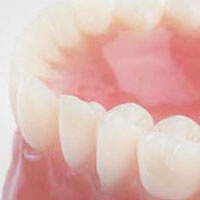 Improving your smile is something which you can now easily pursue. In the past, individuals relied only on chance on whether or not they would have a beautiful smile. If your genes did not cooperate, then you would not be gifted with a mesmerizing smile. Luckily, with the advent of the 21st century is the emergence of a branch of dentistry — cosmetic dentistry. With regards to the different procedures and treatments, crowns and veneers are considered the staples of cosmetic dentistry
Improving your smile is something which you can now easily pursue. In the past, individuals relied only on chance on whether or not they would have a beautiful smile. If your genes did not cooperate, then you would not be gifted with a mesmerizing smile. Luckily, with the advent of the 21st century is the emergence of a branch of dentistry — cosmetic dentistry. With regards to the different procedures and treatments, crowns and veneers are considered the staples of cosmetic dentistry
What are crowns and veneers?
Porcelain crowns are caps which are placed over a damaged tooth. Because the crown is fitted over a tooth, the crown then serves as the new dental enamel of the tooth with the original tooth found in inside the crown. On the other hand, veneers are thin shells which are pasted on the front surface of teeth. Unlike crowns, veneers are only one sided and do not encapsulate each tooth. Crowns and veneers are effective in concealing dental flaws as well as in improving the appearance of your teeth.
What are crowns and veneers made of?
Crowns and veneers are made with different dental materials but the most notable materials are composite resin and porcelain. When composite resin material is used to make the crowns and veneers, these restorations are they referred to as direct restorations because the composite resin material is sculpted right on the tooth. On the other hand, porcelain crowns and veneers are called indirect dental restorations. Porcelain material is ideal for making crowns and veneers.
What are the advantages of using porcelain crowns and veneers?
There are three reasons for why you should opt for porcelain crowns – they are more durable, they are less likely to stain and they are more natural looking. The durability of the crowns are brought about by the bonding procedure of the restoration and the tooth. With proper maintenance and by taking care of your dental health, a person could wear the same set of crowns or veneers up to 10 years after the installation. On the other hand, porcelain is also a stain resistant material which keeps teeth from being stained in the process of being exposed to food and drinks which may be dark staining. Finally, porcelain has a translucency which makes it very similar to the natural dental enamel of teeth. For this reason, porcelain treated teeth are difficult to differentiate from untreated teeth.
Image Courtesy Pinterest


Get Social